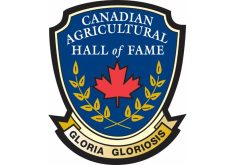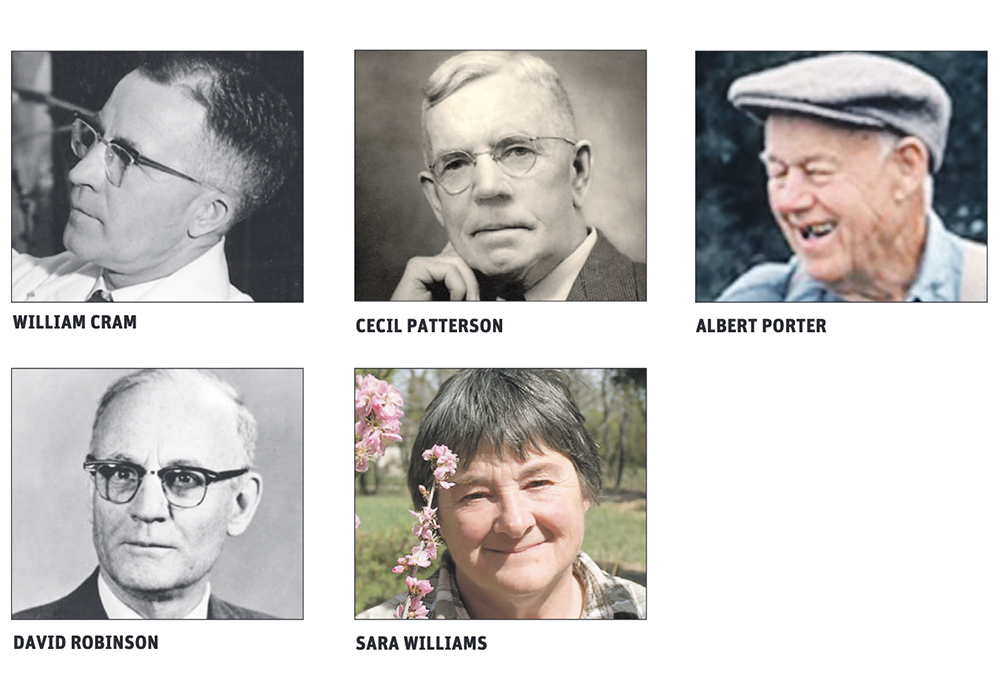Six men will be formally inducted into the Saskatchewan Agricultural Hall of Fame at a ceremony in Saskatoon April 13
SASKATOON — The Saskatchewan Agricultural Hall of Fame will induct six people later this spring.
Reed Andrew, president of the organization, said the new inductees each made significant and distinguished contributions to the welfare and improvement of Saskatchewan agriculture. They are Abdul Jalil, Brian Olsen, Bruce Coulman, Grant Carlson, Les Johnston and Stewart Stone.
Abdul Jalil worked as a career public servant with the provincial and federal governments, where he helped develop infrastructure that bolstered agriculture research in Saskatchewan.
He was involved with the creation of agriculture research chairs at the University of Saskatchewan, the establishment of the Livestock and Forage Centre of Excellence and the Global Institute for Food Security.
Read Also

New coal mine proposal met with old concerns
A smaller version of the previously rejected Grassy Mountain coal mine project in Crowsnest Pass is back on the table, and the Livingstone Landowners Group continues to voice concerns about the environmental risks.
Jalil said he recognized early in his working life that research infrastructure is a key component to the agricultural sector in Saskatchewan.
“People don’t realize how critical that is because people see the crop varieties scientists release, but they need infrastructure, which is services, programs, money and the buildings where they can do the work,” Jalil said.
“So, I think over the last few years I recognized that, so I wanted to emphasize this and play my role in investing in those areas over the years, both at the provincial government and then at the federal government, and with the Agriculture Development Fund, which many farmers know I headed for many years.”
Brian Olsen created his own company, Power Pin Inc., and grew it to become the world’s largest supplier of tractor-implement drawbar hitching components, selling the Drop-Pin Hammer Strap.
While farming in Tompkins, Sask., Olsen made a hitching assist for reloading round bales on wagons, which evolved into making hitches for the agriculture industry.
“In our industry we had compatibility with p.t.o., three-point hitches, hydraulic, and at the main drawbar connection there was no compatibility,” Olsen said.
“We started selling parts to John Deere in 1997, the Drop-Pin Hammer Strap, which allowed in-cab hook up, and today we are with, I think, 11 tractor plants around the world. We brought in $160 million export dollars into Fort Qu’Appelle since we built the facility there.”
Olsen played a large role in developing the first implement standard in the world, ISO 21244.
“Not only did we supply the components to make that standardization, we supplied the standard that is a template for all implement hitches,” he said.
After starting and then running Power Pin Inc. for 30 years, Olsen sold the company two months ago.
Grant Carlson helped form the Saskatchewan Pulse Crop Board and introduce the Saskatchewan pulse crop levy. He operated his family’s farm, KEG Farm Ltd., and KEG Agro., a seed processing plant near Hague, Sask.
Carlson also participated in many multi-year research projects with the Crop Development Centre.
He said members of the pulse growers association that preceded the Saskatchewan Pulse Crop Board had a long-term vision, and they decided as a group that more funds were needed to pull the industry ahead.
Government investments in research were shrinking at the time, he said, and it became apparent that the pulse industry had to come up with its own money for the research required to grow the sector.
“The way to get those funds was a mandatory checkoff on all pulse crops grown in Saskatchewan. And there was an ability to do that through some legislation that the Saskatchewan government had in place. It was a lengthy procedure,” Carlson said.
“Once we started receiving those funds, we were able to leverage those funds with funds available from governments and industry. We put in a portion, and they would put in a portion and we were able to do some very, very interesting research and plots and developed new varieties. It was an exciting time in the pulse industry.”
Bruce Coulman improved forage varieties for producers during his 42-year career. Many of those years were spent working at the Livestock and Forage Centre of Excellence at the University of Saskatchewan. He developed 24 novel forage crop varieties in nine different species, some of which were the first of their kind.
He said that because perennial forages are in the field for a long time, there isn’t a big turnover when it comes to variety or seed.
“So, one has to have a lot of patience,” Coulman said.
“The programs go along and I was fortunate to have quite a number of varieties released and some of them are very widely used by producers in the province and in Western Canada.”
Two species of brome grasses are widely used by producers. Meadow brome is good for pasture and smooth brome is better for hay production.
“We made some crosses between these and produced hybrid types of grass, which have the good characteristics of both of them. So fairly high yielding, really good first cut hay, and then good regrowth for pasture,” Coulman said.
Leslie (Les) Johnston helped establish the Saskatchewan 4-H Alumni group at the University of Saskatchewan and served as its first vice-chair. He spent 30 years supporting Saskatchewan 4-H as a club leader, public speaker and educator, and was widely sought as a cattle show judge.
Johnston was the Saskatchewan representative on the national Quality Starts Here program and helped develop and launch the Verified Beef Program.
“My work was extensively in the beef side of 4-H… My mother was really big in the home and crafts and things like that. She was all over the province judging and instructing but I felt that we needed to help the beef side.
“And so it was my way to give back to my industry, and what better way to do that than with a bunch of young kids that just love to have fun and learn.
“My last show, where I decided to hang up judging 4-H, I was judging grandchildren of people that I had started with, and I thought, ‘God, it must be time for this guy to get out of there.’ ”
Johnston judged most of the major shows in Western Canada, including Manitoba Ag Ex, Canadian Western Agribition and regional 4-H shows.
“You know with judging, it didn’t matter what kind of day it was or how good you did, you always made somebody mad because not everyone could win, and it was very competitive.
“A lot of people put a lot of work into it and a lot of people base a lot of their income off of their successes, so, there’s a lot of pressure in it.”
Stewart Stone worked at the Saskatchewan Beef Stabilization Board to develop strategies that benefit ranchers and the industry. He spent 20 years of his career supporting the Saskatchewan Wheat Pool Livestock Division/ Nilsson Brothers Inc.
Stone sat on many different committees, including the Canada Beef Export Federation, Farm Animal Council of Saskatchewan, Livestock Services of Saskatchewan Corp. and Canadian Western Agribition.
In November 2022, Stone was awarded the Queen Elizabeth II Platinum Jubilee Medal for exemplary volunteer and leadership efforts.
The men will be formally inducted into the Saskatchewan Agricultural Hall of Fame at a ceremony in Saskatoon on April 13.


















